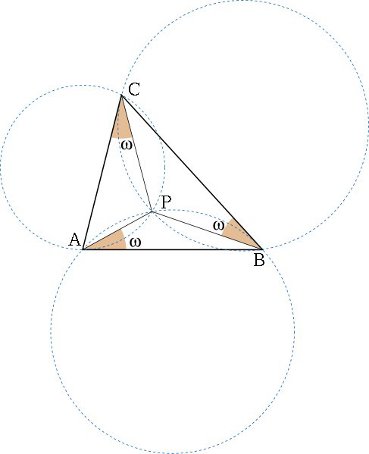If you'll examine any list of the greatest mathematicians of all time, you'll find that many of them were also interested in astronomy. More generally, quite a few were passionate about understanding the workings of the cosmos. For instance, it goes without saying that Newton and Archimedes (considered by many to occupy the top two spots on the list) contributed significantly to astronomy. Carl Friedrich Gauss (the third on most lists), developed (among other things) an elaborate method to calculate the orbit of the dwarf planet Ceres.
Henri Brocard (1845-1922) was not quite at the level of Archimedes, Newton, and Gauss (nobody was!), but he was nevertheless an accomplished mathematician and meteorologist, who spent the last years of his life in Bar-le-Duc, France, making extensive astronomical observations with a small telescope.
It appears, somehow, that those infatuated with the abstract, so-called "Platonic world of mathematical forms," also frequently were bewitched by the heavens. Here, however, I want to concentrate neither on Brocard's main, purely mathematical contributions (which were in the area of the geometry of the triangle; e.g., Figure 1), nor on his (more modest) contributions to meteorology and astronomy, but on a small, fascinating problem that he posed in articles written in 1876 and 1885.

Figure 1. The Brocard point in a triangle, where the marked angles are equal. From Wikimedia Commons.
n! = 1 × 2 × 3 × 4 ... × n .
As it turns out, the different ways to arrange n objects in order is n!. For instance, you can arrange the three letters a, b, c, in 3! = 1 × 2 × 3 = 6 ways: abc; cab; bca; acb; cba; bac.
If you wonder in how many ways it is possible to arrange all 26 letters in the English alphabet, the answer is: 26! = 403, 291, 461, 126, 605, 635, 584, 000, 000.
4! + 1 = 24 + 1 = 25 = 5
5! + 1 = 120 + 1 = 121 = 11
7! + 1 = 5040 + 1 = 5041 = 71 .
He therefore asked the intriguing question of whether the same was true for any other numbers. That is, whether other whole numbers n and m exist, such that n! + 1 = m. Pairs of numbers (n, m) that satisfy Brocard's problem are known (for reasons that I must admit I don't know) as Brown numbers.

Figure 2. Mathematician Paul Erdös. From Wikimedia Commons.
Being unaware of Brocard's query, in 1913 the famous Indian genius Srinivasa Ramanujan formulated the same question: "The number 1 + n! is a perfect square for the values 4, 5, 7 of n. Find other values." In 1935, H. Gupta claimed that calculations of n! up to n = 63 gave no further solutions. It was only natural then for one of the most prolific authors of mathematical papers, Paul Erdös (Figure 2), to weigh in on this problem. Erdös is known for having collaborated with more than 500 mathematicians on a variety of joint papers. This productivity has led to the concept of the "Erdös number"--a measure of the number of steps needed to connect an author with Erdös. For instance, his direct co-authors have an Erdös number of 1, their co-authors on other papers have number 2, and so on. Incidentally, my own Erdös number is 4. Erdös conjectured that no solutions other than the above pairs (4,5), (5,11), and (7,71) exist. In 1993, Mathematician M. Overholt showed that if a weak form of another mathematical conjecture known as the "abc conjecture" holds true, then there is only a finite number of solutions to Brocard's problem. In August 2012, mathematician Shinichi Mochizuki claimed to have proved the abc conjecture. However, Vesselin Dimitrov and Akshay Venkatesh pointed out an error in his proof in October 2012. Since then Mochizuki has posted a series of papers (the latest one just last month!) claiming to have corrected the mistake, but the jury is still out on those. Finally, in 2000 mathematicians Bruce Berndt and William Galway showed that no other solutions exist up to n equals one billion.
The ancient Pythagoreans believed that the entire universe could be explained by whole numbers. To their dismay, this turned out not to be correct. But whole numbers continue to intrigue many people (not just professional matheticians) even today, and to date, no mathematically rigorous answer to Brocard's problem exists.